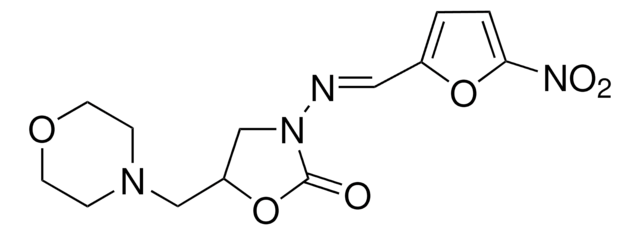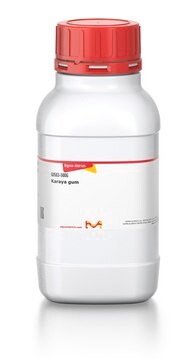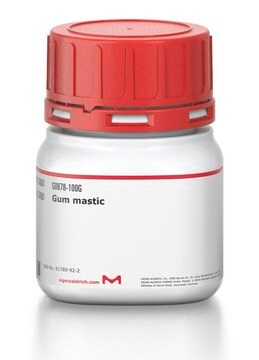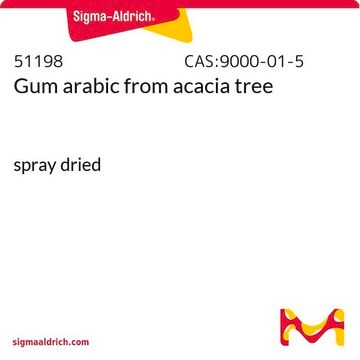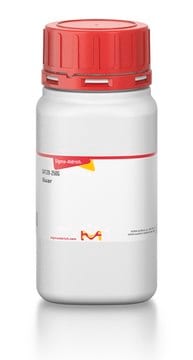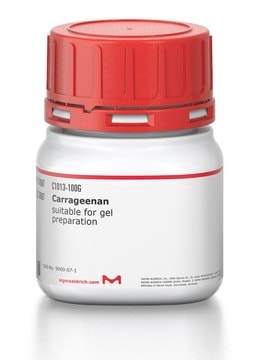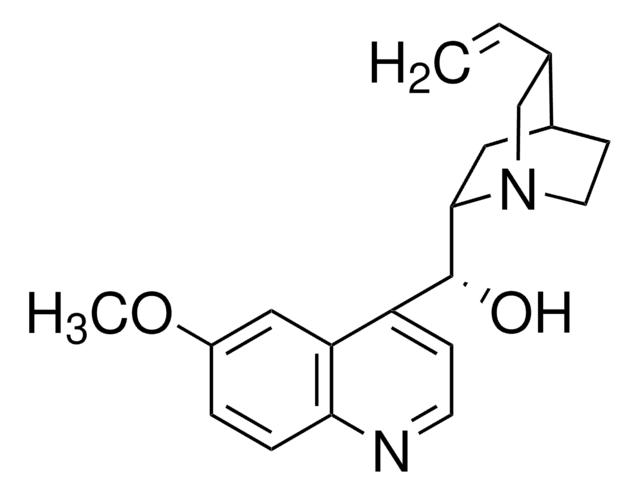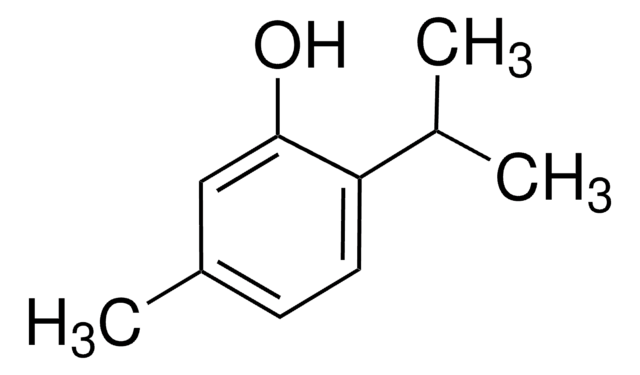Recommended Products
biological source
plant (Astragalus gummifer)
Quality Level
form
powder
color
beige
solubility
H2O: 20 mg/mL
storage temp.
room temp
Looking for similar products? Visit Product Comparison Guide
General description
Tragacanth is a gum commonly found in the sap of various Middle Eastern legumes. It is commonly used as freezing-embedding medium for tissue preservation.
Application
When mixed with water, tragacanth yields a colloidal hydrosol. The bassorin fraction (which consists of approx. 60-70% of the compound) swells to form a gel. This swelling gives the gum tragacanth the ability to form thick, viscous dispersions and pastes. It is an effictive emulsion stabilizer.
Other Notes
A complex mixture of polysaccharides including tragacanthin and bassorin.
To gain a comprehensive understanding of our extensive range of Polysaccharides for your research, we encourage you to visit our Carbohydrates Category page.
Storage Class
11 - Combustible Solids
wgk_germany
WGK 2
flash_point_f
Not applicable
flash_point_c
Not applicable
ppe
Eyeshields, Gloves, type N95 (US)
Choose from one of the most recent versions:
Certificates of Analysis (COA)
Lot/Batch Number
Don't see the Right Version?
If you require a particular version, you can look up a specific certificate by the Lot or Batch number.
Already Own This Product?
Find documentation for the products that you have recently purchased in the Document Library.
Customers Also Viewed
Cesar A Tischer et al.
Carbohydrate research, 337(18), 1647-1655 (2002-11-09)
The polysaccharide obtained by ethanol precipitation from an aqueous solution of gum tragacanth contained arabinogalactan and tragacanthic acid, as well as starch ( approximately 0.6%). GC-MS, NMR, and ESI-MS analyses showed the structure of the arabinogalactan to be even more
Setareh Ghorban Shiroodi et al.
The Journal of dairy research, 79(1), 93-101 (2012-11-23)
In this study, the physicochemical properties of a low-fat dried yogurt paste (kashk) were determined, and the effects of different concentrations (0, 0·1, 0·3 and 0·5% w/w) of gum tragacanth exudates from Astragalus gossypinus on the stability and texture of
R Koppang et al.
The Journal of prosthetic dentistry, 73(5), 486-491 (1995-05-01)
An in vitro test is described that simulates the in vivo fate of a denture adhesive, namely destruction, dilution, and dissolution of the adhesive, by repeated measurement of tensile bond strength for the adhesive in isotonic saline over time. The
C A Edwards et al.
The British journal of nutrition, 73(5), 773-781 (1995-05-01)
The exact mechanisms by which non-starch polysaccharides increase stool output are unknown. In the present study the hypothesis that the site of fermentation and short-chain fatty acid (SCFA) accumulation is related to the action of non-starch polysaccharides (NSP) on stool
D M Anderson
Food additives and contaminants, 6(1), 1-12 (1989-01-01)
Gum tragacanth (GT), affirmed as GRAS within the USA since 1961, was evaluated as 'ADI not specified' by JECFA in 1985. Within the EEC, GT has been permitted temporarily as a food additive (E413), without an ADI, since 1974; a
Our team of scientists has experience in all areas of research including Life Science, Material Science, Chemical Synthesis, Chromatography, Analytical and many others.
Contact Technical Service
